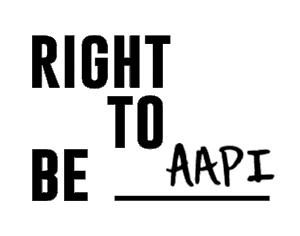Right To Be’s Hate and Hope tracker is a safe space where you can submit your story of any type of harassment. We collect stories of harassment online, in the media, or in your own personal life.
In response to the rise of hate during the 2024 US Election, we also collect election-related hate and harassment stories. You’ll also find ways to document moments of bystander intervention and support others experiencing harassment. Our platform also provides support to individuals experiencing online harassment and empowers bystanders to act. People can receive help through supportive messages or by reporting or documenting abusive content.
We’ve received over 32,000 stories since we were founded. Studies show when you share your story with Right To Be, you shift your understanding of your experience of harassment from the realm of the personal, i.e. “this happened to me, it is specific to me,” to the realm of the societal, “this happened to me, but it’s not about me. This is a bigger, societal problem.” Once you’ve made that shift in your understanding, you’re less likely to blame yourself for what you experienced — and more likely to take action on behalf of others. Research has also shown that sharing your story on our platform is proven to reduce trauma for you — and it helps others too, by letting them know they are not alone. Here are some of the main reasons why sharing your harassment story matters*:
- Helps build a network of support by reminding others they aren’t alone
- Gives other people and organizations important information on where and how harassment is happening.
- Amplifies the stories of targets and bystanders
- Helps make harassment visible.
Let others know they are not alone.
*Source: Show Up. Your Guide to Bystander Intervention
Learn more about the impact of our platform and work here.
During election seasons, we also want to:
- Track and map election-related hate stories to identify how hate is happening.
- Identify patterns of hate that can reveal underlying societal issues
Uplift stories of hope and help influence our movement of intervention strategies.
You can share stories of all types of harassment on our platform. You can review, edit, or delete your story anytime.
- We will ask you first to identify if the harassment you received or witnessed was online or offline. Choose “offline” if you want to share experiences happening in physical, public spaces. Choose online if the experience occurs in digital spaces.
You’ll also find ways to report stories of hate that you see in the news or on social media by choosing any of these options. If you want to submit an online harassment story, you need to create an account - You will then be asked to share your story. You will have the option to provide a description of your story, the types of harassment, the motives, and/or links to the harassment (if applicable).
- Next, our moderators will review your story and you’ll be notified when it’s approved.
- After approval, your story will be shared with our community.
- If you share an online harassment story, you will be able to add a help request so our vetted community of bystanders can send you supportive messages or help you report and document abuse.
Submit your story right here, right now.
We take the security and privacy of our users very seriously. We implement different social and technical security best practices, including moderation of all activities, stories, and bystander accounts, regular technical safety audits, and privacy options for sharing. When sharing your online harassment story, you have the option to choose what name you display. All our offline harassment stories are anonymous.
All activity on the platform is reviewed by trained staff on the Right To Be team. This includes harassment cases, supportive messages, help requests, documentation, and bystander accounts.
All bystander accounts are reviewed before being accepted. If you want to become an ally and support people experiencing online harassment, you need to become a member and link a LinkedIn, Mastodon, or Twitter account to the request. We do this to protect our community and ensure bystanders have a stable online identity and no history of hate. Some well-intentioned bystander accounts may be rejected if their linked social media platforms do not meet our predetermined criteria.
We think that speaking up about your experiences with harassment is an incredibly bold act. We admire the people who take this brave step and want their experience to be 100% empowering. Sometimes bystanders may be willing to help but don’t know what to say or say things that could worsen the situation for the person being harassed. Please refer to our Best Practices for Bystanders guide to learn some tips on how to send supportive messages.
Stories categorized as offline harassment will be public to both members and non-members on the website. For this reason, we ask that you do not include any personal or identifying information (addresses, phone numbers, full names, etc.) in any submission. For online harassment posts, you can choose if you want your story to be private or accessed by our trusted community members. When writing and posting your online harassment story, you have the option to choose what name you display. All posts and comments are moderated by our team.
